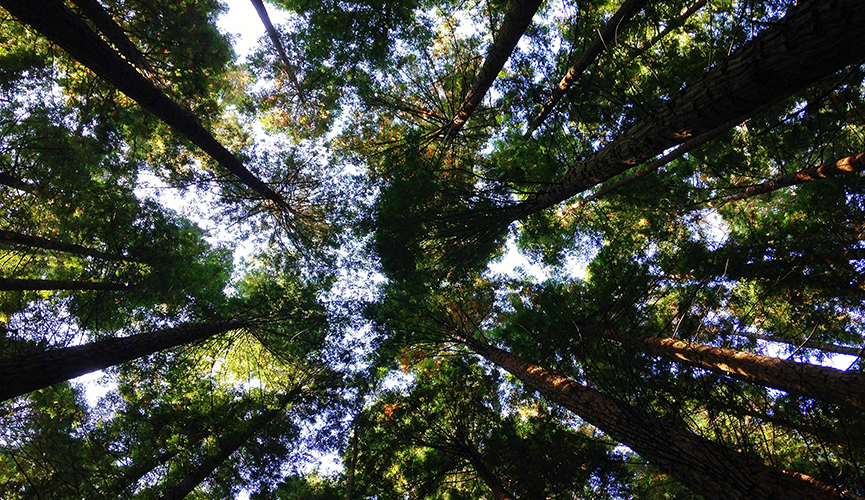A decade for action
The International Decade for Action on ‘Water for Sustainable Development’ commences on World Water Day, 22 March 2018, and terminates on World Water Day, 22 March 2028. The decade is about speeding up efforts towards meeting water-related challenges. This means focussing on the UN’s Sustainable Development Goal 6 – Clean Water & Sanitation. Goal 6 focusses on improving access to safe water and sanitation for the worlds poorest communities and reducing pressure on water resources and ecosystems.
25 years of celebration
2018 marks the 25th consecutive year that the world celebrates World Water Day. It is a day to celebrate the importance of water and remind ourselves to take action and help tackle the global water crisis that we face today. It could not be a more timely celebration and discussion on the future of water.
So how is World Water Day relevant this year?
The theme for World Water Day 2018 is “Nature for Water” which involves exploring nature-based solutions to the water challenges we face in the 21st century. Activities to explore and discuss nature-based solutions to the water challenges we are facing will be planned globally.
Nature-based solutions
Nature-based, natural solutions have the potential to solve many of our water challenges. We need to do so much more with ‘green’ infrastructure. This approach to water management protects, restores, or mimics the natural water cycle and harmonises it with ‘grey’ infrastructure. ‘Grey’ infrastructure includes pipes, pumps, ditches, and detention ponds engineered by people to manage stormwater.
In addition, planting new forests, reconnecting rivers to floodplains, and restoring wetlands will rebalance the water cycle and improve human health and livelihoods. Check out worldwaterday.org. It is a brilliant site for water enthusiasts and water enthusiasts-to-be.
Gain perspective
If there is any doubt about why we need to talk about water, let’s get some perspective here. Water scarcity already affects four out of every ten people. About two billion people! That’s almost 1/5 of the world’s population who experience dire lack of access to safely managed drinking water services. 4.5 billion people lack safely managed sanitation services, and ninety percent of all natural disasters are water-related(1). Imagine that!
What the experts say
The World Economic Forum’s Global Risk Report 2018 works with experts and decision-makers across the world to identify and analyse the most pressing risks we face. This year, the report has rated extreme weather, water shortages, natural disasters and a failure to prepare for climate change as four of the top five risks to future economic growth.
The World Economic Forum also stated that changes in climate could ‘trigger or exacerbate societal risks such as domestic or regional conflict and involuntary migration’. One of the biggest problems refugees face is access to clean water and sanitation. In some areas of the Middle East, water scarcity has contributed to civil unrest and political upheaval.
At the other end of the spectrum, increased flooding across South Asia regularly affects millions of smallholder farmers, causing billions of dollars of damage to crops, livestock and homes.
The core of a sustainable planet
Water is at the core of a sustainable planet and crucial for healthy ecosystems and survival itself. It is essential for reducing the immense global burden of disease. We must have water in order to maintain health through adequate sanitation. It is also needed to help develop healthy social-economic systems, welfare and for the productivity of populations.
A global crisis
Globally, in the last century, our water usage has been growing at double the rate of population. This is unsustainable at every level. An increasing number of regions are reaching the limit at which water services can be sustainably delivered due to competing uses for water. Water risks are hitting our economies hard with water scarcity affecting almost every part of the planet.
The crippling crisis in Cape Town
We have all recently heard about the devastating and crippling water security crisis that Cape Town is in the midst of. This is just one vivid example of a region struggling with increasingly complex water-related problems. It is evident, from events in Cape Town, that the impact of nearing such a shutdown would be devastating. The local population will have to wait in long lines at state-managed water distribution points to receive a mere 25 litres of water per day. This is less than half the water needed for one average shower.
Of course, we have not reached Day Zero yet, but experts are warning of public health concerns. For example, poor sanitation will lead to faster spread of dangerous diseases, especially for the city’s poorest residents. They also forecast that water pipes could crack from dry conditions. This would endanger future water distribution when the drought ends. The Premier of the Western Cape has warned that normal policing of local water use will be inadequate to control the chaos that will ensue.
For people sitting far away, Cape Town could be naively treated as an extreme case. And it may be so. But it surely is not the only region to suffer from intense water scarcity in recent years. Cities around the world have made headlines due to severe droughts exacerbated by climate change and poor water management.
A rapidly increasing demand for water
A fast-growing global population and unprecedented economic development in urban cities mean a rapidly increasing demand for water. About seventy percent of all groundwater withdrawn is diverted for agricultural use. Agricultural intensification and urbanisation are impacting water pollution levels.
Climate change is contributing to extremes in water availability, with more frequent and costly floods and droughts, the USA being a prime example of that. The complex interlinkages with the way water is distributed and used around the world points to the sheer task we face in preserving this vital resource. Read about this in our commentary from last year’s article.
A tragedy of the commons
The problem up til now has been that water has not been costed for. Using the invisible resource of groundwater has been all too easy and, just like any resource afflicted with the tragedy of the commons, has been severely mismanaged. This seems to be a global problem – India’s national economy has been coping with the massive costs of aquifer depletion in the Punjab state and elsewhere. The same problem plagues numerous groundwater and aquifers in Africa and North America.
Each city or region has its own set of risks it must be aware of. For example, Cape Town has medium-to-high annual variability, which means that rainfall varies greatly from year to year. Although Cape Town has suffered droughts in the past, wet years usually follow to ease the pain, refilling reservoirs that supply the city with almost all of its water. The current record drought though seems relentless and reservoir levels have fallen to 25 percent(2).
The problems caused by lack of water are almost too endless to list. What can be said here is we can take charge. Each and every one of us, by limiting our water use, reducing food waste, knowing more and educating our children for the future.
Singapore
In 2018, Singapore World Water Day (SWWD) will be celebrated throughout the month of March. Singapore’s theme for 2018 is ‘Make Every Drop Count’ and points to need for each and every drop of water being precious. Each of us can play an active role to show our care for water.
This year’s SWDD campaign will include 95 schools, including 61 preschools, taking part in a water rationing exercise. This aims to help students better understand the value of water. It’s amazing that this is more than twice the 45 schools that participated last year.
In case you missed it, Singapore World Water Day was on March 3rd. More than 4,000 participants from 30 organisations and educational institutions pledged to do their part at home to save water and fight climate change.
Five main household habits were pledged for adoption:
- taking shorter showers
- half-flushing toilets when possible
- washing vegetables and dishes in a container
- using a mug when brushing their teeth
- washing clothes only on a full load
Changing small habits will make a huge difference over time.
This year on March 22
On World Water Day 2018, Singapore’s iconic landmarks like the Esplanade, Singapore Flyer, Gardens by the Bay and Resorts World Sentosa will be lit in blue light from 7 pm in support of the sustainability cause. Go down and see it.
Top five things can you do this World Water Day
- Educate yourself, make yourself aware of the water issues around you, know the footprint of your activities and household (yes this was my first recommendation last year as well!). Singapore is taking water issues very seriously.
- Take this one day to reflect on how important water is to your life – don’t take water for granted as easy as that may be in Singapore.
- Never underestimate the power of your small, daily actions to change the world around you.
- Learn about water technologies that are helping communities around the world and learn facts about global water issues.
- Get involved and join the water movement.
Water is life. We cannot live beyond what planet earth has given us. Cherish it, take care of it. It is yours to take care of.
Happy World Water Day!
Sources:
[1] WHO/UNICEF 2017 and UNISDR data
[2] http://www.eco-business.com/opinion/3-things-cities-can-learn-from-cape-towns-impending-day-zero-water-shut-off/













